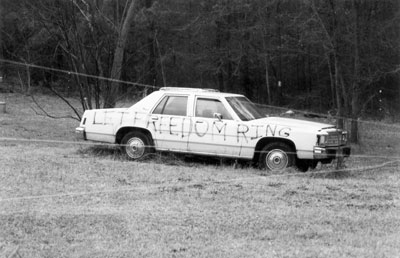All Nonfiction
- Bullying
- Books
- Academic
- Author Interviews
- Celebrity interviews
- College Articles
- College Essays
- Educator of the Year
- Heroes
- Interviews
- Memoir
- Personal Experience
- Sports
- Travel & Culture
All Opinions
- Bullying
- Current Events / Politics
- Discrimination
- Drugs / Alcohol / Smoking
- Entertainment / Celebrities
- Environment
- Love / Relationships
- Movies / Music / TV
- Pop Culture / Trends
- School / College
- Social Issues / Civics
- Spirituality / Religion
- Sports / Hobbies
All Hot Topics
- Bullying
- Community Service
- Environment
- Health
- Letters to the Editor
- Pride & Prejudice
- What Matters
- Back
Summer Guide
- Program Links
- Program Reviews
- Back
College Guide
- College Links
- College Reviews
- College Essays
- College Articles
- Back
The Freedom of Rights
“BAM!” This is the sound heard throughout the ghettos that many oppressed citizens face fighting for their rights during times of mass discrimination. One of these helpless populations included the Jewish populace during the Holocaust. The Holocaust was a violent genocide and an ethnic extermination. Similarly, the Civil Rights Movement was a violent and hard-fought battle that the African Americans were forced to struggle through. Both the Jewish community and the African Americans were compelled to face great obstacles, to fight for their deserved rights, and to defeat the oppressors.
Peaceful protests were a common defence among the Jewish people during the Holocaust and African Americans during the Civil Right Movements. A way of peaceful protest to fight against discrimination used by both parties was writing. The Jews wrote detailed accounts of “the tortuous conditions and inhumane experimentation” that they faced from the Nazi soldiers so that “nothing will be forgotten” in the future (Holocaust). African Americans also used similar tactics in writing to illuminate the darkness infringed upon them. Martin Luther King Jr. used the tactic of literacy for nonviolent protesting when he wrote the Letter from Birmingham Jail. This was used to inform outsiders of what was silently going on with discrimination. Martin said in his letter that “we know through painful experience that freedom is never voluntarily given by the oppressor; it must be demanded by the oppressed” saying that to gain freedom, people must stand up for themselves (King). King believed in peaceful protesting and his tactic of writing was shared with the Jews.
Martin Luther King Jr. was a man of many talents when it came to a peaceful protest. He, and other prominent Civil Rights leaders, used multiple tactics that the Jewish people were not able to use because most of the Jews were imprisoned. A. Philip Randolph, Medgar Evers, Rosa Parks, Malcolm X, and Ella Baker were some of these great leaders. These forerunners used tactics such as arrests, legal battles, marches, speeches, boycotts, and media coverage. The March on Washington was one of the biggest turning points for support in the Civil Rights Movement. Many Civil Rights activists would purposely get arrested, either get media coverage for their cause, or for a legal battle to arise. Desegregation in schools and public transportation was won through these legal battles. Marches, boycotting, and speeches also made massive amounts of people aware of the problem (Shmoop). Peaceful protesting was one of the most popular methods of protesting during the Civil Rights Movement, but not the only one.
The other methods of protest that were used mostly during the Civil Right Movements, but occasionally during the Holocaust, were violent protests. People like Kurt Baum, a Jewish survivor of the Holocaust, had to violently protest with a group of people from his camp to be able to escape and regain his rights and freedoms. Kurt tells about his running and hiding after he forced his way out of the camp brutally to get to freedom (Baum). A considerably larger amount of African American used violent protests than the Jewish society. Through all protesting during the Civil Right Movements “militant black activists had begun to see their struggle as a freedom or liberation movement not just seeking civil rights reforms but instead confronting the enduring economic, political, and cultural consequences of past racial oppression” (Green). Natt Turner, for example, was famous for his escape from his master and murders of other slave masters in a violent protest to try to gain African American equality. The phrase “Black Power” became popular in the 1970s and was related to the violent uprisings that the African Americans had begun to use in protest instead of the peaceful events that they had previously been participating in. This term originated shortly following the Watts Riots that left 34 people dead, 1,000 injured, and 4,000 arrested after the younger generation of African Americans grew tired of being peaceful while there brothers and sisters continued to be treated unfairly, blasted with water hoses, shot at, and hung (Shmoop).
Even though they had many differences, the Jews during the Holocaust and African Americans during the Civil Right Movements protested in both violent and nonviolent ways. Each group had to face their own obstacles, to fight for their deserved rights, and to defeat the oppressors. Eventually both parties were successful in their long and drawn out fight, and rejoiced in the good news. “BAM!”

Similar Articles
JOIN THE DISCUSSION
This article has 0 comments.

Baum, Kurt. "Kurt Baum - Jewish Survivor." Iwitness USC Shoah Foudaition. USC Shoah Foudaition, 15 May 1997. Web. 2 Feb. 10
Green, Robert P., and Harold E. Cheatham. The American Civil Rights Movement: A Documentary History. Manchester: Manchester UP, 2009. Print.
Holocaust. Jerusalem: Keter, 1974. Print.
King, Martin Luther. Letter from Birmingham Jail. Stamford, CT: Overbrook, 1968. Print.
Shmoop Editorial Team. "Civil Rights Movement: "Black Power" Era."Shmoop.com. Shmoop University, Inc., 11 Nov. 2008. Web. 02 Mar. 2015